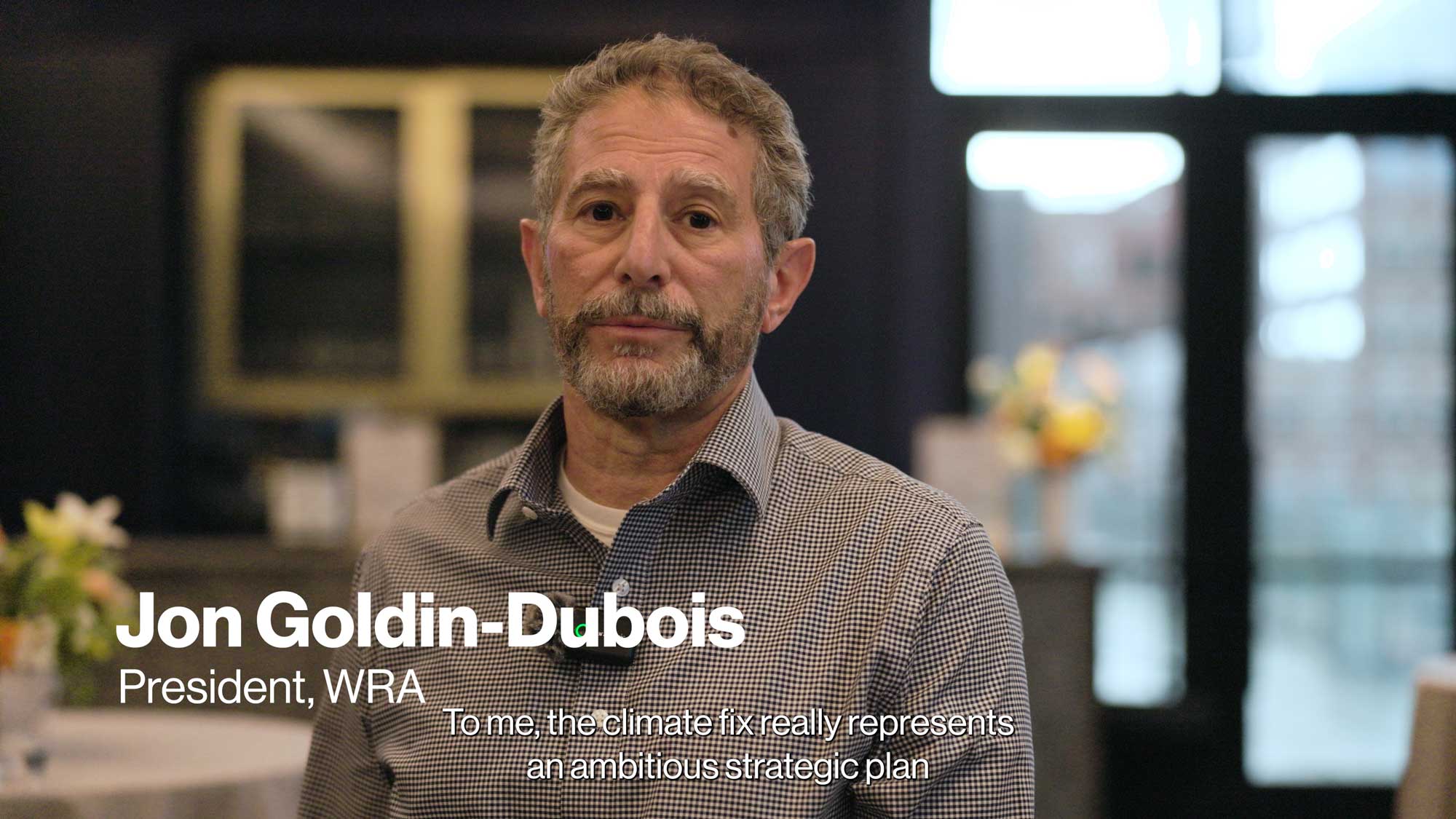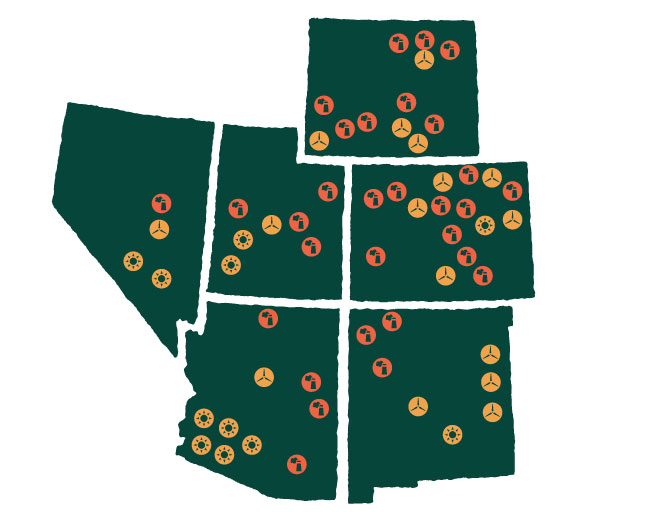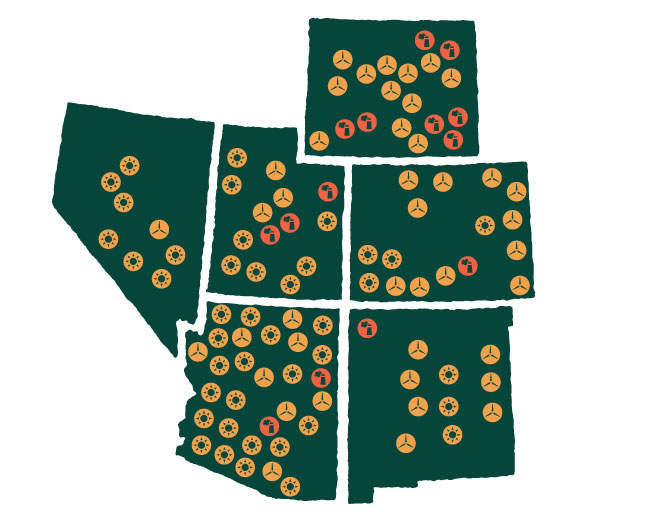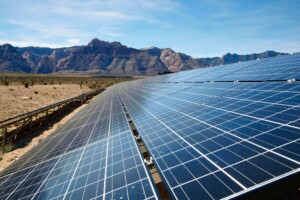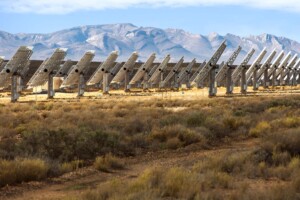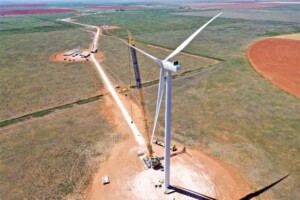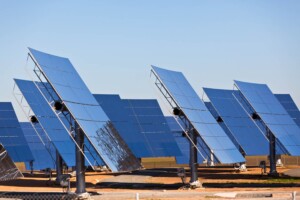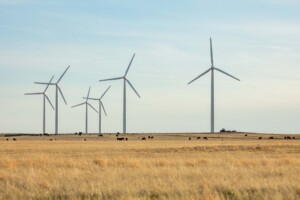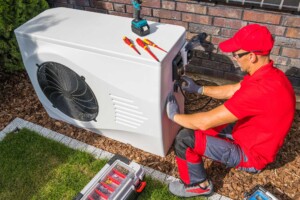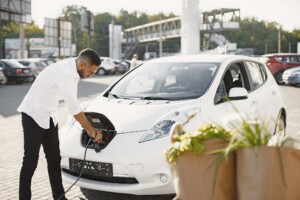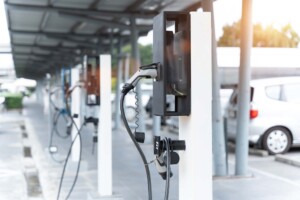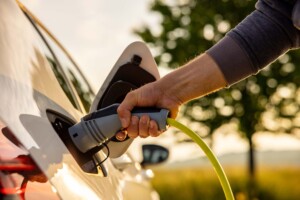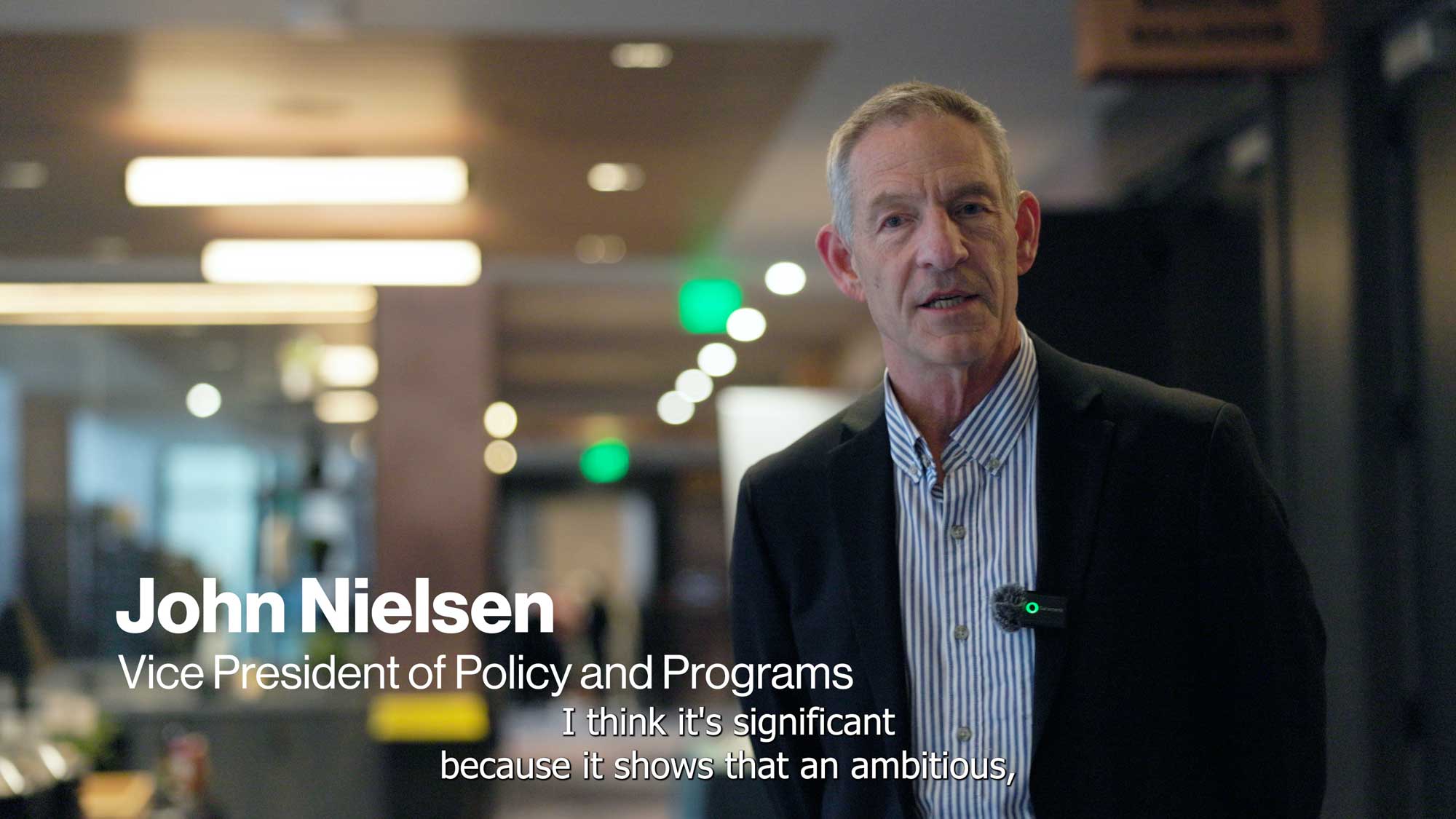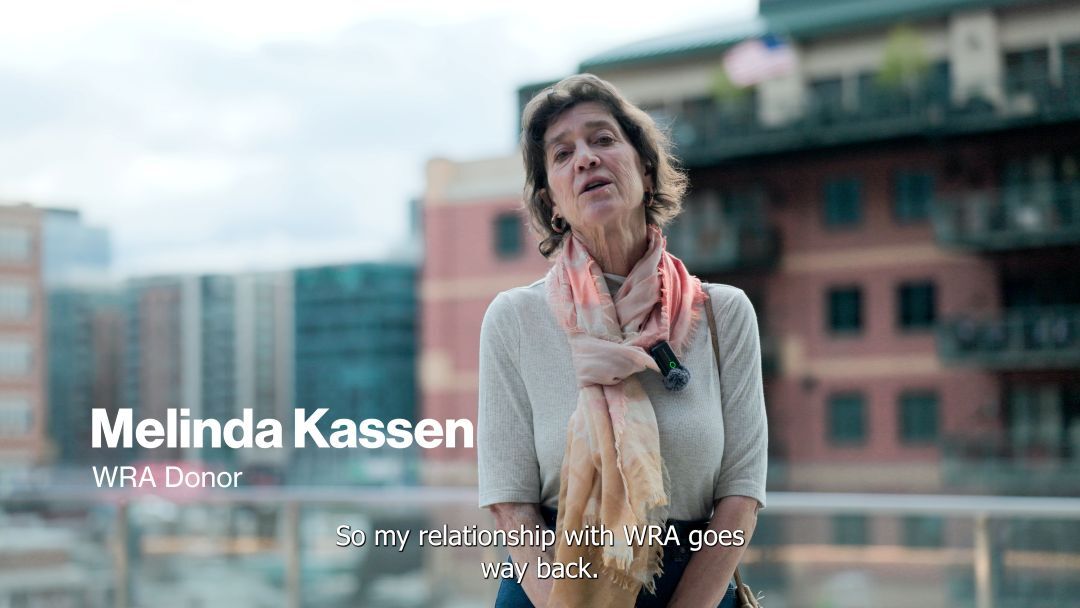
Sparking an energy transformation
Pollution from power plants, gas-powered vehicles, buildings, and homes does not just drive climate change, it threatens our health and the livelihoods of our communities. For the future of our planet and the landscapes we love, we must stop burning fossil fuels. We do not have time to wait.
Seven years ago, the Climate Fix began as an idea based on one question: How do we take aggressive and effective action on climate change that leads to large-scale carbon reductions, and how do we do it as quickly as science demands?
WRA saw both the success of our clean energy advocacy, along with its untapped potential, and began reimagining how the West is powered, creating a blueprint that would scale our proven strategies into a regional plan for transformative climate action.

A low-carbon future has to be measured in the transformation of the big stuff in the economy — power plants, buildings, and cars.”
The Vision
Drive deep reductions in greenhouse gas emissions through a rapid clean energy transition, showing that economic growth and environmental sustainability can go hand in hand.
The Goal
Reduce 120 million tons of emissions from the power, building, and transportation sectors in our region by 2030.
The Strategies
Retire
Coal
Retire coal plants and replace their capacity with wind, solar, and geothermal power.
Modernize
the Grid
Modernize the electric grid to accommodate the influx of renewables and enhance battery storage.
Implement Efficiency
Implement energy efficiency approaches to keep electricity demand growth as flat as possible.
Energy in the west
is changing
Secured 91.5 million tons of CO2 reductions annually by 2030.
85.8 M
Power Sector
3.3 M
Transportation Sector
2.5 M
Building Sector
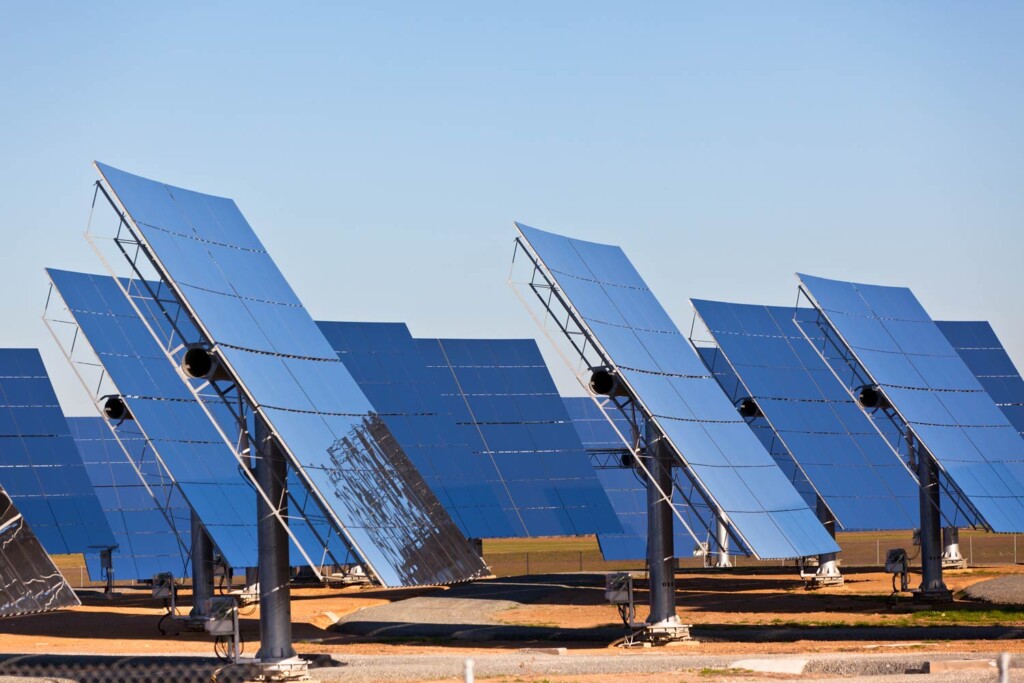
As New Mexico utilities aim for ever-higher levels of renewable energy generation, attaining the statutory mandates in a cost-effective manner becomes more difficult, and requires...
A massive shift to renewables across the West.
Power Sector Sources
In 2016, almost half of the electricity in WRA’s six-state region was generated at coal-fired power plants. By 2030, the eight Climate Fix utilities project that over half of their electricity will come from renewables. The map mirrors this shift – across our landscape, coal plants have been replaced with clean wind, solar, and geothermal.
Coal
Solar
Wind
13,700 MW of coal plants retired between 2016 to 2030.
Power Sector Emissions by State
The Interior West saw a combined 27% reduction in C02 emissions in 2024 as compared to 2016 levels.
$69 billion clean energy investment
Renewable Capacity By State
Nearly 27,000 megawatts of new solar, wind, and geothermal capacity have been added in total between 2016 and 2024.
We leveraged state-level action and worked directly with utilities to drive billions in clean energy investments across the region.
Engineering the
clean energy
transition
By incentivizing utilities to reduce emissions and by working where key energy decisions are made at the state level like public utility commissions, WRA has created policy solutions to reshape the energy system — while delivering economic, public health, and environmental benefits throughout the West. By targeting state legislatures, regulatory agencies, and public utilities, WRA has driven progress where it matters most — on the ground, in communities, and in policies that shape how we produce and consume energy. Check out just a few of the policies that WRA helped pass through the Climate Fix and our strategies.
Climate Milestones
Retire Coal
Grid Modernization
Replace with Renewables
Retire coal plants and replace their capacity with wind, solar, and geothermal power.
Modernize the electric grid to accommodate the influx of renewables and enhance battery storage.
Implement energy efficiency approaches to keep electricity demand growth as flat as possible.
Spur the transition to clean cars and trucks across the West.
Bigger Utilities Can Spur
Broader Transformation
When we launched the Climate Fix, we decided to focus on the largest eight electric utilities in our region. Our calculated assumption was that focusing on these largest utilities could catalyze a larger transformation that would drive emissions reductions from other, smaller utilities. This strategy proved successful, especially in Colorado.
In 2018, we collaborated with Xcel Energy to secure a commitment to reduce its emissions at least 80% below 2005 levels by 2030. Then, we secured passage of Colorado legislation codifying that commitment and…
advocated for strong rules at the regulatory bodies to effectively implement the legislation. This work culminated in Xcel’s Clean Energy Plan, which was finally approved in 2024, and directs Xcel to invest over $10 billion in clean energy, retire Colorado’s last coal unit no later than 2030, and reduce its emissions by 86% by 2030.
The success with Xcel Energy is a critical component of achieving WRA’s regionwide climate goals. This success has also proven to be a foundation for securing additional emissions reductions from other smaller utilities in Colorado. Specifically, in 2021, we passed legislation requiring Tri-State Generation and Transmission, Black Hills Energy, Colorado Springs Utilities, and other Colorado utilities to develop similar plans to achieve at least an 80% reduction in emissions by 2030. We now have plans in place for all Colorado electric utilities to achieve at least an 80% reduction in emissions by 2030.
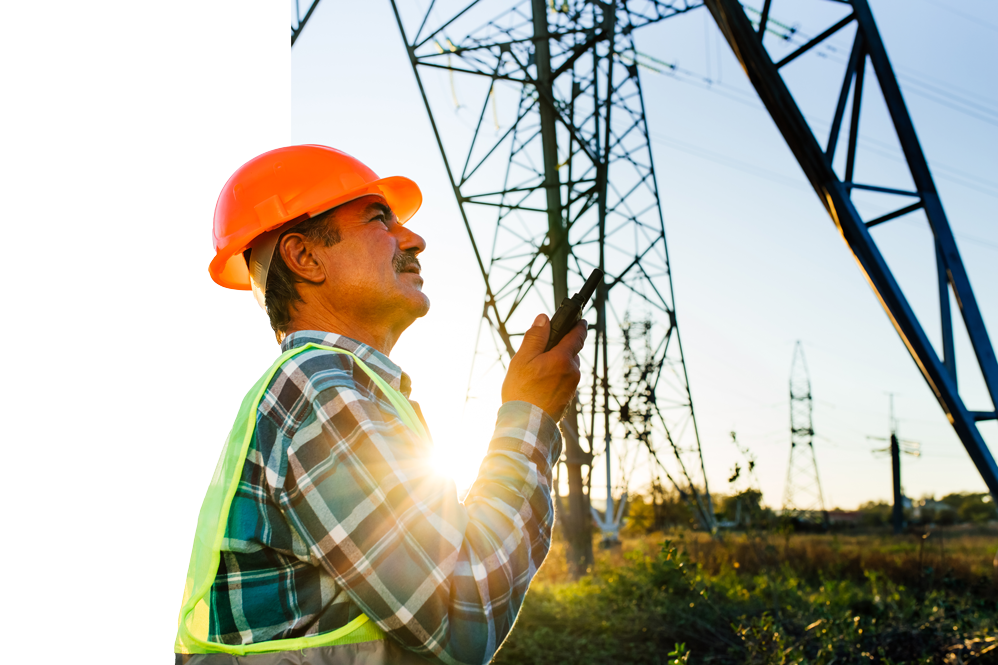
The path forward
Scaling success and state level action
Our story is proof that big ideas, when rooted in community, science, and policy, can lead to extraordinary outcomes. There is much more to do. And the work ahead is challenging.
For leading utilities in our region, we are approaching the final stretch of decarbonization that presents complex technical and financial hurdles. For utilities that have lagged, the urgency to cut emissions has accelerated, making delays more costly and difficult. For these utilities, particularly in Arizona and Utah, the political environment makes progress toward climate goals even more challenging. But we know that this work is possible, and it goes through the states.
While the crisis is global, some of the most effective solutions are being forged at the state and local levels.
Why? Because states control key levers of climate and energy policy. States regulate utilities, set renewable energy standards, oversee transportation systems, and manage natural resources, and they are where innovative ideas can be tested, refined, and scaled. When faced with harmful policies and political deadlock in Washington, D.C., states offer the best forum to enact groundbreaking climate policies that go beyond what is possible at the federal level.
A December 204 analysis from the University of Maryland shows that with strong leadership by non-federal actors, the United States could reduce greenhouse gas emissions by 54% to 62% compared to 2005 levels by 2035, putting us nearly on path to reduce emissions consistent with the science.
We must work together to:
Accelerate the transition to clean electricity.
Build a transportation system powered by clean energy.
Move homes and businesses to efficient, electric heating and cooling.
Strengthen our power grid so it can deliver clean electricity to where it’s needed.
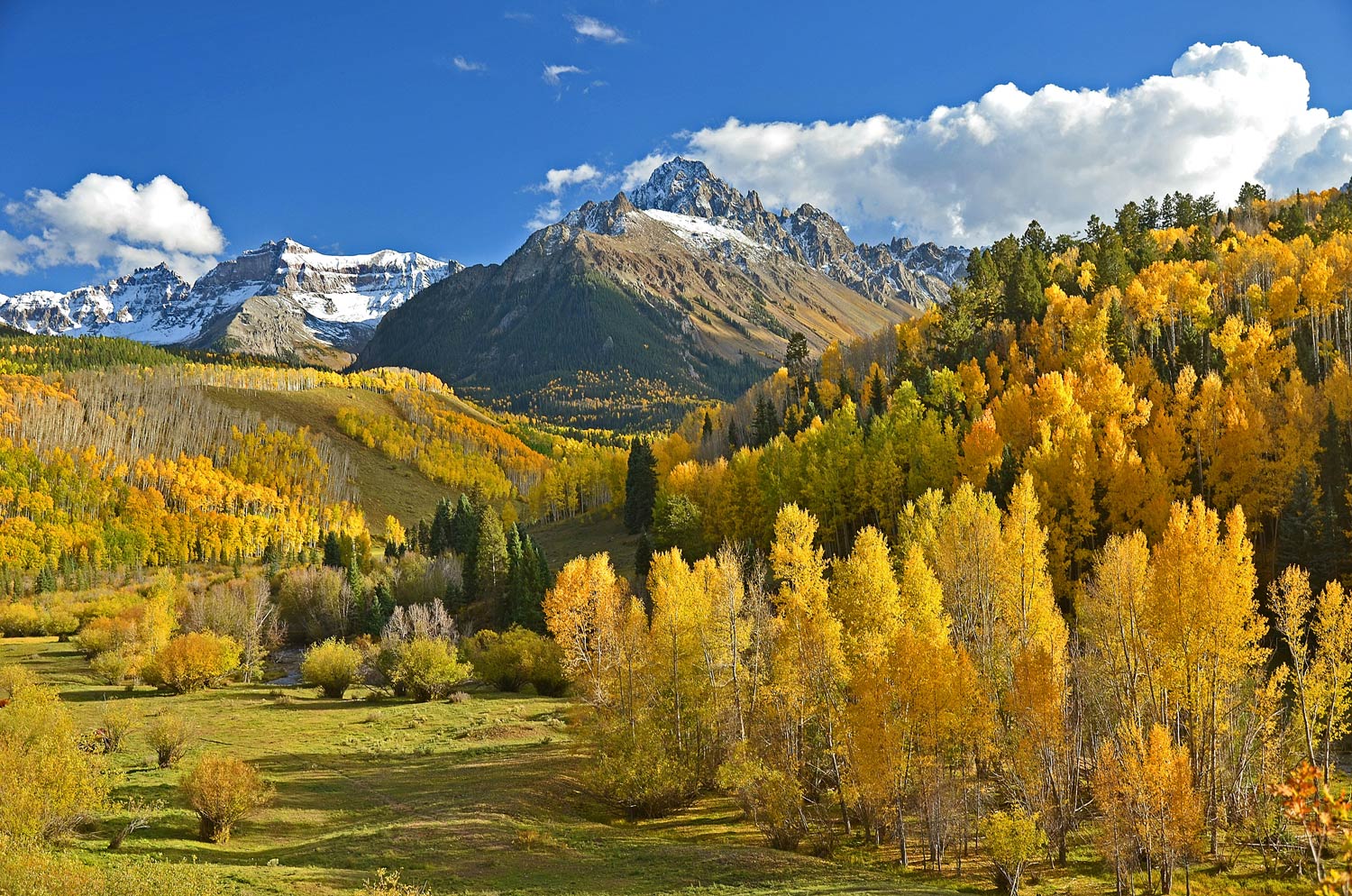
And we must do it quickly.
The stakes are high, but so is our resolve. The Climate Fix has provided a game plan for what is possible, and now it’s time to take the next step — to replicate our successes, refine and sharpen our strategies, and ensure that the West remains a leader in the fight against climate change.
let’s build our
future together
None of us can do this work alone. Fighting the climate crisis is going to take the skills, determination, and expertise of all of those who care about the future of our environment. WRA is prepared to meet the next phase of our critical work with the same strategic, determined approach that has driven progress to date with the experience and knowledge from the past seven years.
Let’s build our future together.
